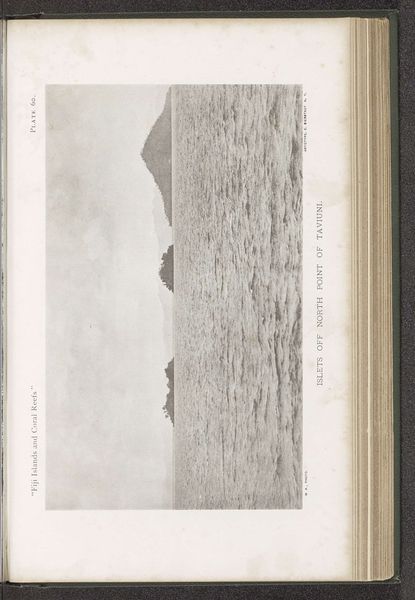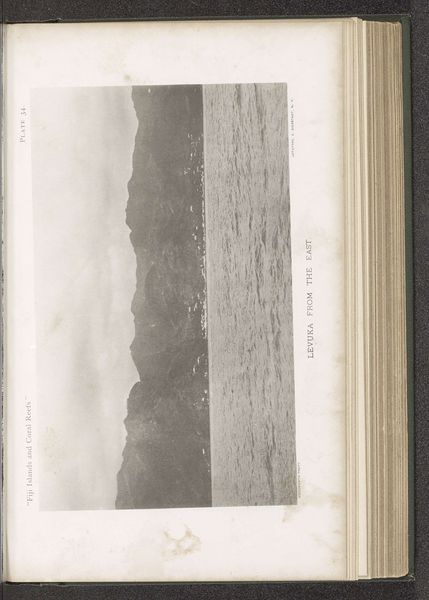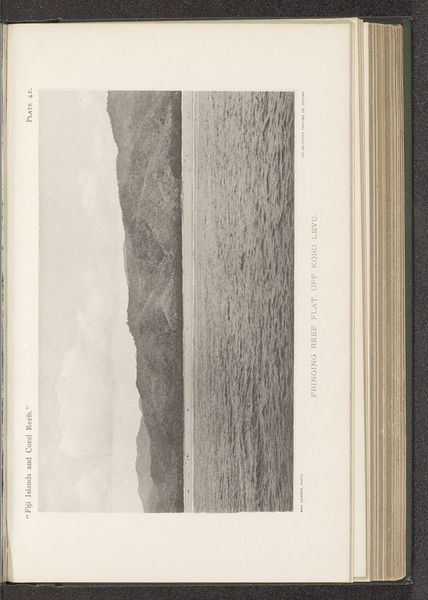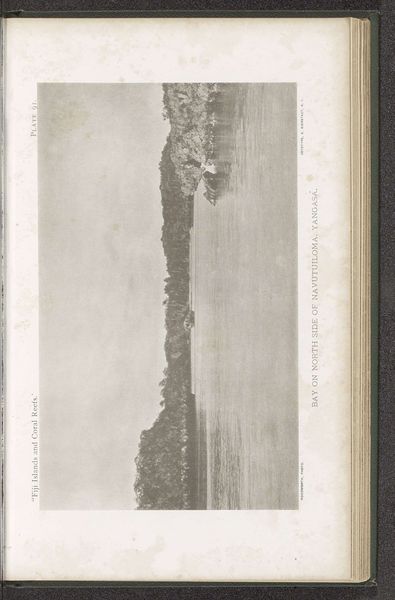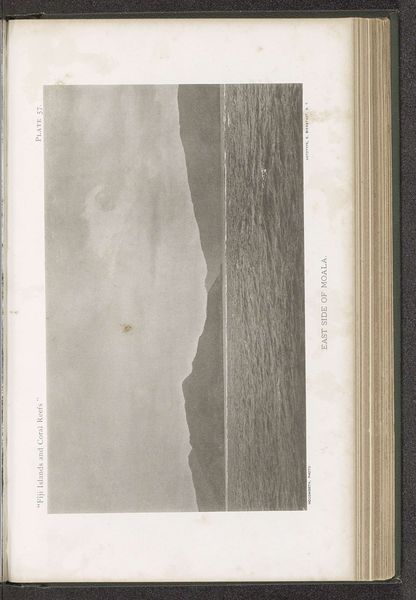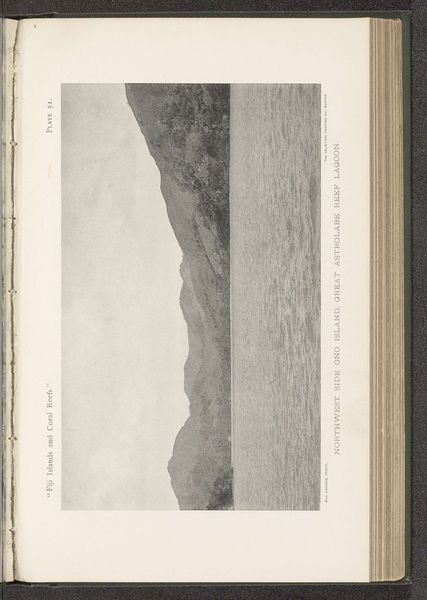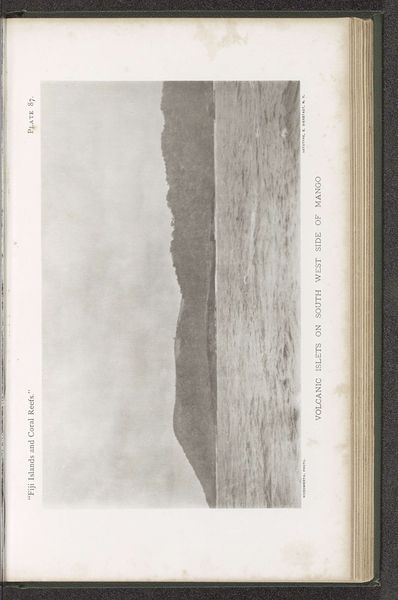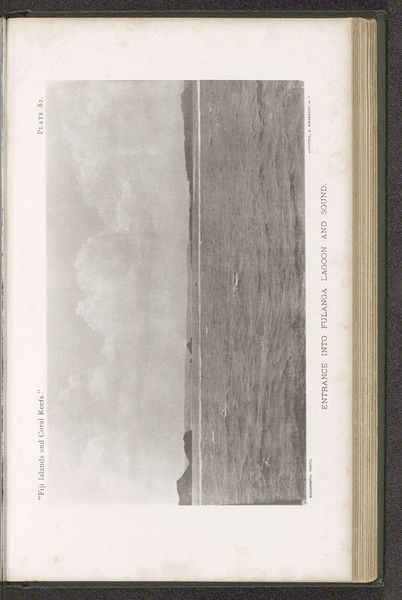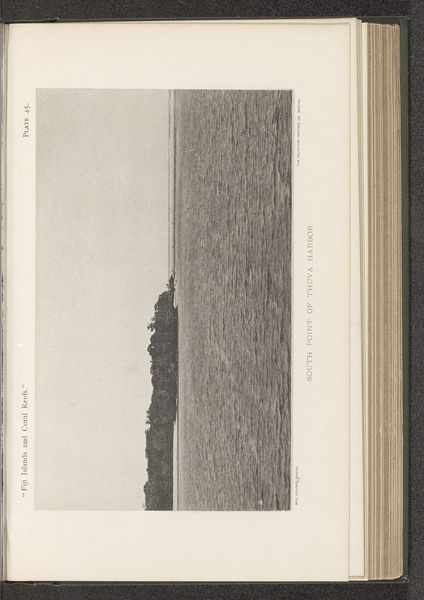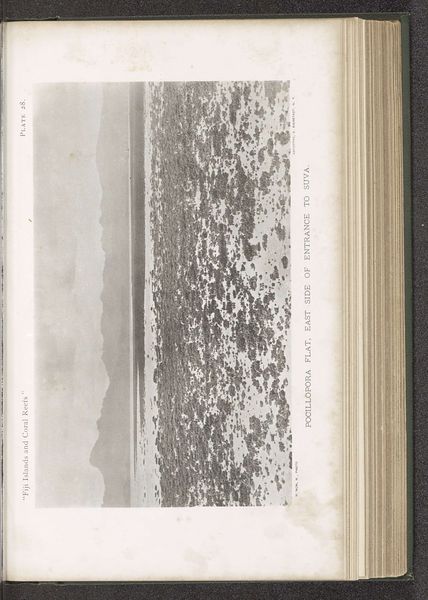
print, photography
# print
#
landscape
#
photography
Dimensions: height 108 mm, width 179 mm
Copyright: Rijks Museum: Open Domain
Editor: So, this is a print called "Gezicht op Ovalau," which I understand translates to "View of Ovalau," taken before 1899 by W. McM. Woodworth. The vastness of the ocean in contrast with the hazy island creates a very powerful impression. How do you interpret this work, considering its time? Curator: This photograph exists within a complex web of colonial exploration and scientific documentation. Consider its place within the visual rhetoric of empire. The very act of photographing Ovalau, from a specific, presumably advantageous, eastern perspective, suggests an assertion of dominance – a claim to knowledge and control. Editor: So, it's not just a pretty picture of an island. Curator: Precisely. Ask yourself, who commissioned this image? What purpose did it serve? These landscape photographs, widely disseminated through printed material like books, constructed a particular image of the Pacific islands for Western audiences, often emphasizing their exoticism and amenability to colonization. Think about the scientific expeditions of the time. Editor: I guess I hadn't thought about that power dynamic. Was photography commonly used in this way then? Curator: Absolutely. Photography became a key tool for cataloging and controlling colonial spaces, offering a seemingly objective, yet heavily mediated, view. The "landscape" genre, as we see it here, was often deployed to legitimize colonial ambitions by portraying the land as open, available, and ripe for “improvement” by European powers. The subdued tonality further evokes the sense of discovery, and possibly appropriation. What will you take away from looking at this work today? Editor: Well, it has really broadened my view; what I initially saw as an interesting landscape print is deeply rooted in colonialism. Thank you! Curator: And thank you. Recognizing these contexts enriches our appreciation, while simultaneously prompting a critical reflection on the histories embedded in the image.
Comments
No comments
Be the first to comment and join the conversation on the ultimate creative platform.
